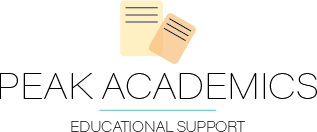Have you ever found yourself repeating the classic phrase: “How many times do I have to tell you [blank]”? This repetition begs the question: why does telling rarely result in changed behavior? The answer hides in the gap between what it means to tell versus what it means to teach.
Not that long ago, teaching was synonymous with telling: a one-way transfer of information, where the speaker simply provided facts or details. Since then, however, much has changed. Educational research has explored the art and science of teaching, transforming its definition, clarifying how to measure its effectiveness, and identifying what truly works best for students.
So what has educational research found about teaching that is so fundamentally different from telling? And how does understanding that difference benefit teachers and parents when working with children? As far as telling is concerned, one study found that active learning increased student success and that lecturing increased failure rates by an alarming 55%.
Imagine a parent expressing frustration because they are repeatedly telling a child to clean their room. What if, in this case, the problem lies in the assumption that this child already has the executive functioning skills required for that task - including a high level of organization, prioritization, and focus? If that parent were to approach the situation from a teaching standpoint instead, here are some of the most essential differences to consider.
MEASURABLE OUTCOMES
Good teaching is, at its core, organized around measurable outcomes. One approach to this iscalled Backward Design. Using this method, you would:
● First, define the learning objective (ie. Child will clean and maintain an orderly bedroom)
● Then, decide what evidence would demonstrate mastery (ie. Child will put toys away immediately after using them; Child will put toys away in their appropriate and designated places; Child will make a habit of cleaning the bedroom for 15 minutes every evening without getting distracted)
● Finally, plan learning activities and instruction around those specific objectives and types of evidence
DISCUSSION VS TELLING
While the first step in the teaching process still includes direct instruction, it helps to explore that information as a discussion instead. Consider some potential discussion questions:
● Why is it important to keep a clean room?
● What problems could come from having a messy room?
● How do you feel while in a clean room versus a messy room? Why do you think that is?
● Why do you think it’s hard for you to keep it clean?
● What ideas do you have that would improve your ability to keep it clean moving forward?
● Is there anything I can do to help?
In this context, you still communicate vital information about what it means to clean a room, why it’s important, and what you recommend. Because it is a discussion, however, it will also encourage your children to think critically and problem-solve, empowering them to reframe their understanding of the problem and approach solutions in a personally invested way.
ACTIVE LEARNING
Practice opportunities should gradually increase the amount of independent mastery, and while strategies vary widely, one simple approach is “I do, we do, you do.” Depending on your child’s level of independence, you might clean the room while your child watches and observes, then clean the room together. It is particularly helpful to vocalize your thought process, so they hear each step your mind goes through while cleaning. Next, your child would do so under supervision and guidance until they can manage their room independently and consistently. How long this takes depends entirely on the child’s unique timeline. For some, this might be a few days, for others, a few weeks - that’s perfectly natural! The bottom line is this: the best learning takes place in an active, hands-on, and engaged manner.
FEEDBACK
Once you have measurable goals in hand, and you are actively engaged in hands-on practice, one more critical piece comes into play: feedback. This a complex subject with a wide range of factors to consider, but good feedback should link directly to the original evidence described for the learning objective.
For example, if “Child will put toys away in their appropriate and designated places” was one of the pieces of evidence, this could be tracked daily. Each evening, review the room with your child. If the evidence isn’t where it should be, show your child where the item(s) should have been instead and provide guidance on how to avoid that error moving forward.
Depending on the situation, it can also be helpful to ask the child why they thought that was the appropriate place to put it. As surprising as it might be, giving explicit attention to errors and spending time reflecting on mistakes directly improves learning.
While not all situations stem from a skills deficit or require explicit instruction, it can be incredibly helpful to look at areas where they might be and revisit them from a ‘teaching’ instead of ‘telling’ approach. Setting measurable goals, identifying evidence, providing room for practice that becomes increasingly independent, and offering thoughtful feedback can all improve those skills that children struggle with and that may need a more targeted type of support.
Written by Brandi R.



